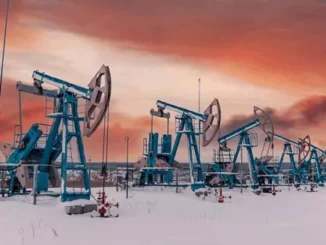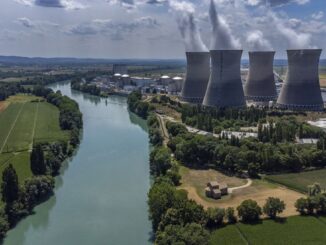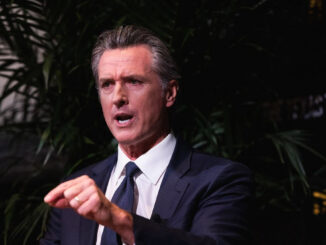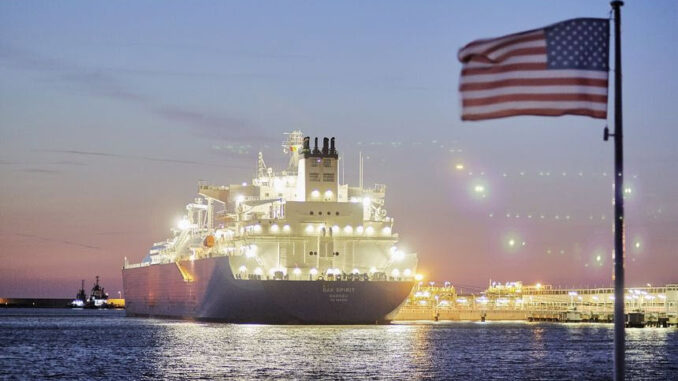
European officials are scrambling to lock down energy supplies they would need to keep their economies churning if hostilities around Ukraine imperil natural gas piped from Russia, and have turned to the U.S. for help finding backup sources beyond Moscow’s control.
In recent weeks, as Russia has positioned more than 100,000 troops near Ukraine, European Union energy officials have huddled with U.S. counterparts and are jetting to gas producers including Azerbaijan and Qatar to hunt for fallback sources.
European search efforts began in the fall, when the global economic rebound from the Covid-19 pandemic sent gas and electricity prices skyrocketing. The efforts intensified in recent weeks, as Moscow’s escalation with Kyiv left European governments contemplating a once-unthinkable scenario of a conflict interrupting the flows from Russia, which provides about 40% of the 27-country bloc’s natural gas. Few officials expect that to happen and acknowledge that huge volumes of gas from Russia couldn’t be replaced in the foreseeable future. But the prospect is motivating a quest for fallback supplies to cover an economy that can’t otherwise function.
Now, U.S. and European officials are racing to find short-term alternatives to refill depleted reserves. More than two-dozen tankers are en route from the U.S. to Europe, lured by high gas prices in the EU. Another 33 tankers that haven’t yet confirmed their destinations are likely to mainly head there as well, according to oil analytics firm Vortexa Inc. “They would only cover a fraction” of Russian supplies if all were lost, said Clay Seigle, managing director at Vortexa.
Biden administration officials in recent days have held marathon video calls with officials around the world, trying to convince buyers in South Korea, Japan and other countries that have already paid for their imports to let the U.S. reroute those shipments to Europe, people involved in those talks said. European officials have traveled or planned trips to Doha and the Azeri capital, Baku, to try to line up supply.
The efforts, described by officials in the U.S., Europe and the Middle East, are an attempt to weaken what has long been Moscow’s strongest leverage over Europe: The continent’s biggest and easiest source of gas flows from Russia through a network of pipelines that cross Belarus and Ukraine. That gas heats homes, generates electricity and keeps factories running. Countries including Germany and Austria have long resisted diversifying to alternative, more expensive sources of gas outside of Russia.
Moscow has consistently dismissed suggestions that it would cut gas exports: “This is yet another brilliant example of fake hysteria,” President Vladimir Putin’s spokesman, Dmitry Peskov, said on Jan. 24.
EU and allied officials are trying to find stopgaps at a time of tight supply and steep prices. Russia has, for the most part, declined to sell any gas beyond what its long-term contracts require, frustrating buyers who expected Moscow to be more understanding. Beyond Russia, producers like Qatar say they are maxed out, with most of that country’s exports of liquefied natural gas going to buyers in Asia. Qatar also has its relationship with Moscow to consider, a senior Qatari adviser said.
“Politically, we are very keen to help both the United States and Europe, but in reality, we cannot just walk away from our long-term commitments to Asia even if it is just for a short period,” said the adviser. “The U.S. and other players in Europe will have to do a lot of convincing here.”
While the U.S. and other nations are technically capable of producing more natural gas, they face bottlenecks in how much they can ship overseas. There are a limited number of U.S. LNG export terminals that can turn the gas into a liquid so it can be transported over long distances. U.S. LNG export facilities have been running near capacity for months amid tightening supplies of fuel around the world, as economies gradually recover from the pandemic and demand roars back.
Not all European governments are as alarmed as Washington and Brussels. German officials said they aren’t working on market interventions with the U.S. to secure alternative gas supplies and say the country’s supplies are secure.
Many officials in the U.S. and Europe said they doubt Russia would massively cut Europe’s supply because that would harm Moscow financially and cement European political will to find other gas sources. Barring a cataclysmic rupture in economic ties, Russia is almost certain to remain Europe’s most important gas supplier. Even if gas stopped flowing tomorrow, analysts in Germany think the country could scrape through this winter, by using reserves and rationing gas if necessary.
EU officials, however, say there is no room for complacency. A reduction in Russian gas supplies at a time of high energy prices and inflation would provide another shock to the economy and to consumers who are only now recovering from the pandemic. Europeans are highly sensitive to fuel prices, which are steep compared with the U.S. because of taxes and limited local supplies. France’s yellow-vest movement started in 2018 after President Emmanuel Macron announced new fuel taxes that would hit drivers. France, Austria, and Hungary are all headed into elections.
The EU’s gas reserves are already low, averaging around 42% of capacity, according to Gas Infrastructure Europe, an association of companies in the field. Germany’s reserves are even lower. When full, they cover roughly 20% of Europe’s annual gas consumption.
“Every few years, when Russia and Ukraine square off, everybody in Europe is uncomfortably reminded just how reliant they are on the overland route of Russian gas,” said A. Wess Mitchell, former assistant secretary of state for European and Eurasian Affairs, who spent years trying to convince his European counterparts to diversify their gas supply. “In retrospect, it’s pretty remarkable.”
After Russia cut gas supplies to Ukraine in 2009, the EU started making its continentwide pipeline network more flexible, allowing gas to flow in multiple directions. But the network still has gaps and relies primarily on supplies from Russia.
Europe has turned to Washington for help orchestrating the complex global diplomacy needed to divert toward Europe huge shipments of LNG already purchased by U.S. allies.
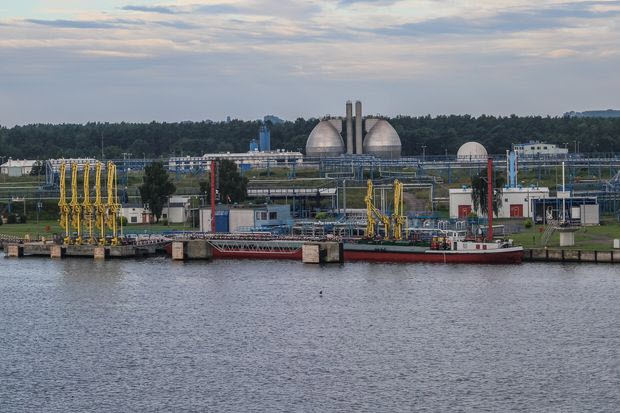
PHOTO: MICHAL FLUDRA/NURPHOTO/GETTY IMAGES
European officials believe they could perhaps double the gas volumes pumped from Azerbaijan through a pipeline crossing through Turkey to southern Europe. That would require installing stronger pumps along the route, work that could be completed quickly if European demand can be locked in. The bloc’s energy commissioner, Kadri Simson, will be in Baku at a gas conference on Feb. 4.
Some analysts wonder how long the current fervor for non-Russian gas will last.
For now, Biden administration officials hope to secure more than 10 billion cubic meters of LNG for Europe, said one person briefed on the plans. Several analysts said that amount of gas, which represents roughly 6% of the gross annual LNG spot market, would be hard to come by.
American exporters, while eager to help, have told U.S. officials during talks that they are already sending as many cargoes as they can to Europe without breaking long-term supply contracts with other customers. Europe is already receiving 70% of America’s LNG cargoes, according to S&P Global Platts. Further discussions on European supply will take place during an EU-U.S. energy meeting on Feb. 7, European officials say.
Closer to Europe, Algeria recently started pumping more gas to Spain and Norway agreed in September to allow state-controlled company Equinor AS A to supply an additional 2 billion cubic meters for the next 12 months through increased production in two big gas fields, said a senior EU official. European partners’ responses sometimes resulted in different forms of support: exploring additional supply, or delaying planned maintenance work to ensure the increased supply reaches Europe quickly, a senior EU official said.
Even if Europe is able to ship in backup LNG supplies, it faces logistical challenges getting the gas around the continent. Spain has many port terminals needed to receive LNG, but few pipeline connections to the rest of Europe. Germany, the continent’s largest economy, lacks the port facilities to import LNG and would need to depend on France, Poland or other countries that have built terminals in part to reduce its reliance on Russia.
Ultimately, a senior EU official said, a significant reduction in Russian gas supply would have to be met with extraordinary measures on the European side. That could include countries extending the life of nuclear plants and even turning to significantly increase the use of coal, an energy source that emits high levels of carbon dioxide and whose use the EU was hoping to gradually end.
“We can only say, ‘we told you so,’” said Witold Waszczykowski, a former foreign minister of Poland, where the government expects to become entirely independent of Russian gas imports within the year. “It should have happened earlier.”
—Summer Said, Benoit Faucon, Christopher M. Matthews and Collin Eaton contributed to this article. – Source WSJ

